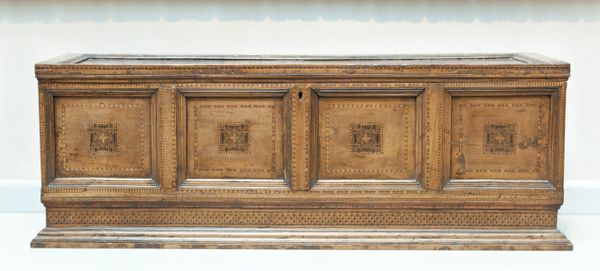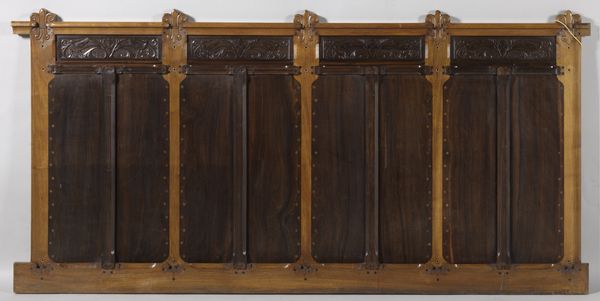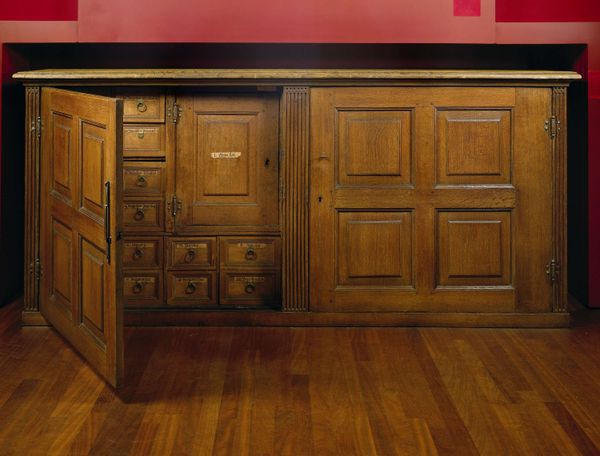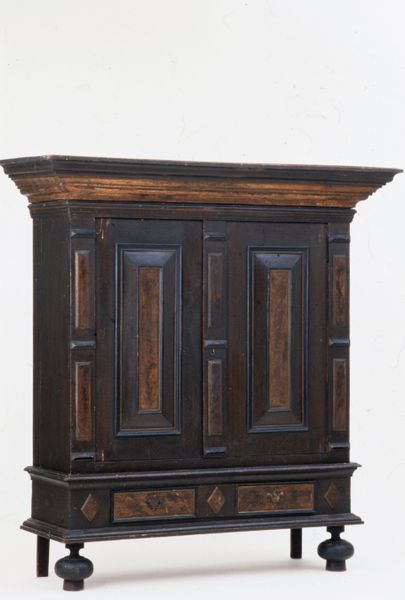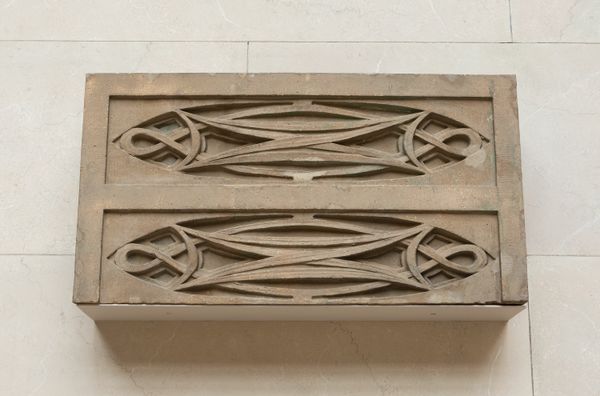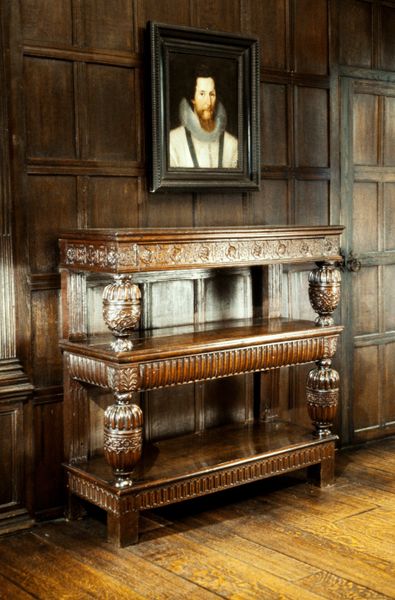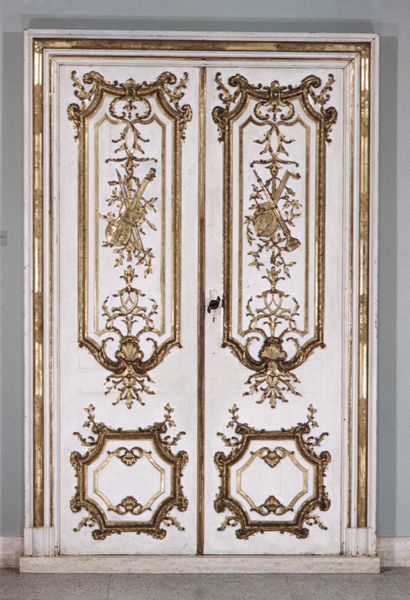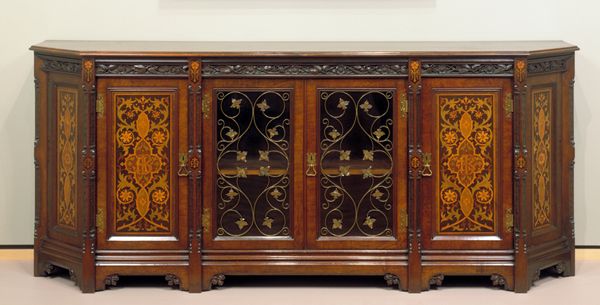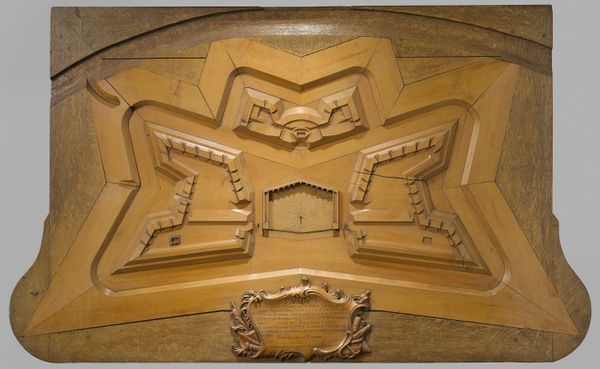
sculpture, wood
#
interior architecture
#
medieval
#
furniture
#
form
#
sculpture
#
wood
#
decorative-art
#
italian-renaissance
Dimensions: 47-1/2 x 140-1/2 x 32-3/4 in. (120.7 x 356.9 x 83.2 cm)
Copyright: Public Domain
Editor: Here we have a cupboard, or credenza, crafted somewhere between 1495 and 1555 by an Italian Tuscan artist. It’s currently housed at the Metropolitan Museum of Art. The most striking thing about this piece is how the maker focuses on symmetry and simple, framed geometric shapes to organize a functional object. How would you interpret the significance of those design choices? Curator: We see here a powerful application of form. Note how the Tuscan artist prioritizes the arrangement of line and plane, manifesting the concept of "Renaissance order." Consider the balance achieved through the repetitive rectangular panels and the satisfying rhythm created by the rounded knobs, like the punctuation in a finely written text. Does the horizontal emphasis perhaps communicate a grounding or stability? Editor: That makes sense. It feels very solid, almost stoic. So you are saying that instead of focusing on, say, the use of the cupboard or where it was displayed, we look closely at what the artist chose to highlight? Curator: Precisely. Look at how the dark grain of the wood is celebrated, becoming an active element in the work. Is the texture not as important as any pictorial scene might be? There are echoes of classical architectural forms translated into furniture, which raises compelling questions about structure and its significance in domestic space. Editor: This has totally reshaped how I think about functional art. Instead of just what it does, considering the artist’s formal choices first brings out so much more meaning. Curator: Indeed. Attending to its construction yields unexpected intellectual insights.
Comments
No comments
Be the first to comment and join the conversation on the ultimate creative platform.
